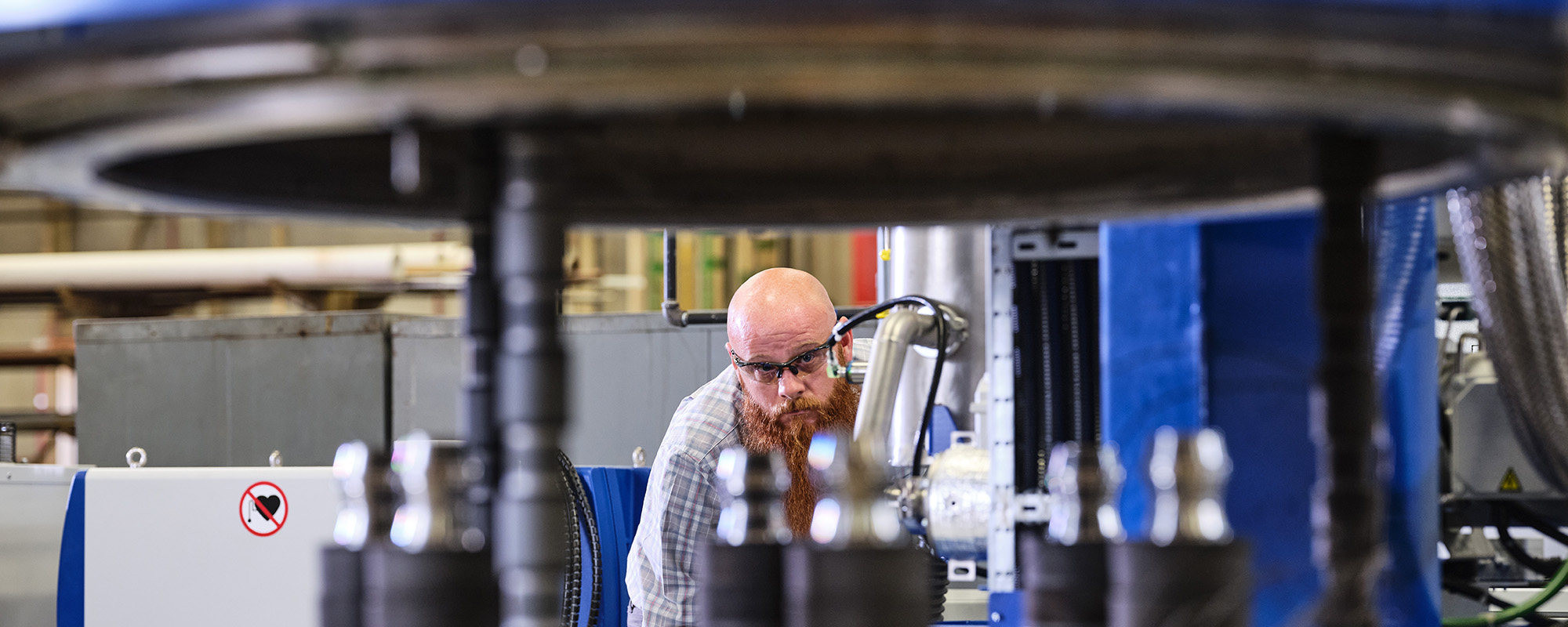Innovation
Turning Concept to Reality: Timken Prototyping
Every technology that’s changed how people live started with a prototype. The trend continues today as innovators solve for a new generation of technical challenges.
At Timken, prototyping helps R&D engineers prove that their new designs can be manufactured successfully — and results in tangible engineered bearing products that can be tested for performance. Industry-leading experts use advanced manufacturing equipment and processes to make first-of-their kind bearings. Those bearings help customers innovate solutions like efficient aircraft engines and sustainable water management systems. Ralph Mosteller, group prototyping leader at the Timken World Headquarters, explains.
Q: How does Timken prototype development support customer innovation?
Mosteller: Engineering uses software and programs to model new products. We turn their designs into functioning parts. Our main goal in bringing these designs to life is validating that a new product can actually be manufactured using currently available technology. We usually succeed. If we don’t, then we have two choices: work with product engineers to modify the design or explore new process technologies that can overcome the manufacturing challenges being presented.
“I think the story of Timken is one of prototypes. Our company was founded in 1899 because inventors built working prototypes that proved tapered roller bearings could turn wheels more efficiently than other solutions of the era. Today’s challenges are bigger, but we’re still influencing how equipment is designed based on what we know and what we do with that knowledge.”
Ralph Mosteller
Group Prototyping Leader at the Timken World Headquarters
Our prototype facility is vertically integrated so we can make products from start to finish, including green turning, heat treatment, finishing operations, assembly and inspection. We’re able to shorten the development time of new products by having everything in one place. It also gives us a unique view into how we can optimize a product’s manufacturing to meet customer demands related to their speed-to-market and performance requirements.
Q: What are the most exciting customer advancements you’ve influenced recently?
Mosteller: One of my favorite things about working with Timken is the variety of industries and customers we serve. We recently helped an electric vehicle manufacturer pass design validation testing by providing an e-axle prototype with bearing cage enhancements. We made several bearing test variants with different geometries and special heat treatments for a biomass company looking to improve their equipment performance. Right now we’re working on bearing manufacturing processes to support more sustainable aircraft engine designs. One really unique project had us modifying existing products to improve pump performance in sustainable water supply, filtration and disposal systems. Those are just a few examples.

Q: How do the discoveries you make in prototyping influence bearing manufacturing more broadly?
Mosteller: Because of the work we do, we’re a test bed for new manufacturing processes and equipment. We make sure new production approaches meet quality standards before we implement them at any full-production Timken facility. The prototype team also maintains all the company’s expertise in tooling and manufacturing techniques, so we can help facilities troubleshoot challenges to meet customer needs quickly. For instance, if a facility gets a custom order for a bearing with a pin style that requires specific welding knowledge, we’ll dispatch one of our experts to train the local team on the proper weld technique.
Q: What are Timken’s unique capabilities in prototyping, and how often do you expand them?
Mosteller: Prototyping capabilities are like tools in a toolbox. We don’t need every tool every day, but we still need them — and we’re always adding new ones. We have an extremely large, special-access-only shop with the flexibility to add new capabilities and experiment with new technologies. We’re currently exploring live tooling and the potential of automated multi-axis machining and finishing equipment. These allow components to be worked on from many different angles simultaneously. What we learn will push Timken manufacturing agility, precision and efficiency to new levels.
Q: Timken has a long history of solving problems. How does prototyping continue to tradition?
Mosteller: I may be biased, but I think the story of Timken is one of prototypes. Our company was founded in 1899 because inventors built working prototypes that proved tapered roller bearings could turn wheels more efficiently than other solutions of the era. Today’s challenges are bigger, but we’re still influencing how equipment is designed based on what we know and what we do with that knowledge.
World-class Timken R&D capabilities drive industrial technology advancements and customer innovation. Learn more about the company’s investment in a range of disciplines like materials science and product testing.
Published: 2024/04/1
